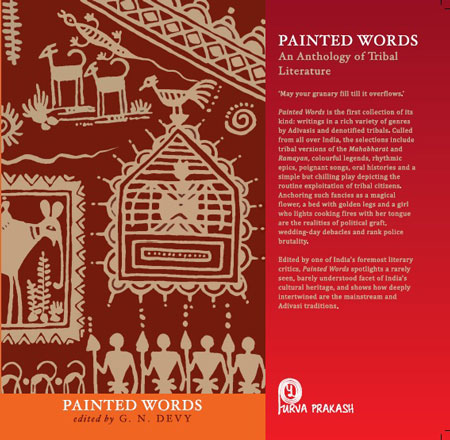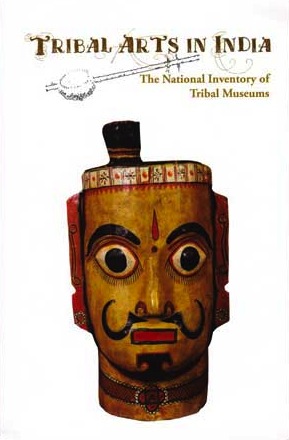
Tribal Literature by G.N. Devy >>
Free eBooks & Magazine: Adivasi literature and languages >>
A cultural renaissance of the Particularly Vulnerable Tribal Groups (PVTGs) of Jharkhand is not a distant dream.
In an attempt to prepare a directory of their dying livelihood skills, art forms and forgotten rituals as well as to revive the same, the state art and culture department has decided to organise a five-day workshop-cum-festival soon. […]
In Jharkhand, there are nine PVTGs — Asur, Birhor, Birjia, Hill Kharia, Korwa, Mal Paharia, Parhaiya, Sauria Paharia and Sabar. According to the 2011 Census, these groups are settled in different districts and add 4.8 lakh to Jharkhand’s population.
Assistant director of the department Vijay Kumar Paswan said they wanted to document the life of the PVTGs and give a fresh impetus to their endangered customs and traditions.
“At present, we have limited knowledge about the art and culture of PVTGs. We must identify veterans who have keen knowledge of the art forms and give them an opportunity to revive the same,” Paswan added.
Former head of the tribal language department of Ranchi University Giridhari Ram Ganjhu, who is guiding the department in hosting this festival, said, “The PVTGs should be referred to as the first scientists. For instance, the Asurs are undoubtedly the first iron smelters who know how to produce rust-free products. One will be amazed to see that the century-old trishul in Tanginath in Gumla has still not gathered rust. So, it is important to help these tribals pass on their knowledge to generations to come.”
Ganjhu stressed that the art forms of PVTGs were aboriginal and yet scientific. “Their rituals and cultures have a scientific base. Though they prefer to stay far from civilisation, their culture has answers to many present day problems,” he added.
Source: “Revival pill for primitive tribes”, The Telegraph, Kolkata, 13 October 2014
Address : http://www.telegraphindia.com/1141013/jsp/jharkhand/story_18909096.jsp
Date Visited: Sun Feb 08 2015 12:46:34 GMT+0100 (CET)
[Bold typeface added above for emphasis]

Read or download titles for free (eBooks & Magazine) >>
JOURNAL OF THE BIHAR AND ORISSA RESEARCH SOCIETY
Note on some Ruins at Majhgaon in the District of RanchiThe ruins are on the top of a small hillock in Majhgaon, a village in the extreme western portion of Chainpur thana, in the district of Ranchi, within 5 miles from the common houndarj of Kancbi district and the Jashpur and Sirguja States. This hillock is commonly known as the Tanginjith Pahar after the God Tanginath who is enshrined in one of the temples on it. From halfway up the hill can be found bricks scattered about here and there, and on the top are to be found the ruins of a small stone temple, the walls of a brick temple, mounds of bricks, a large number of stone images, portions of columns, etc., lying about, and a large iron trisul (trident) fixed in the ground. This last is the most prominent thing in the group and consists of an octagonal rod of iron, 11 inches in perimeter, projecting 22 inches above the ground, at an angle of about 60 degrees to the horizon, surmounted by a knob and over it a trident which now measures 29 inches in height. […]
Source: Full text of “The journal of the Bihar research society” by Rai Sahib Chuni Lai Ray, B.A., September 1915
Address : https://archive.org/stream/journalofbiharre01bihauoft/journalofbiharre01bihauoft_djvu.txt
Date Visited: 5 January 2023
Up-to-date reports by Indian journalists and commentators
To search Indian periodicals, magazines, web portals and other sources safely, click here. To find an Indian PhD thesis on a particular tribal community, region and related issues, click here >>
Search tips
Combine the name of any particular state, language or region with that of any tribal (Adivasi) community.
Add keywords of special interest (music, poetry, dance just as health, sacred grove and biodiversity); learn about the rights of Scheduled Tribes such as the “Forest Rights Act” (FRA); and the United Nations “Declaration on the Rights of Indigenous Peoples”, “Universal Declaration of Human Rights”, “women’s rights”, or “children’s right to education”.
Ask a question that includes “tribal” or “Adivasi”, for instance: “Adivasi way of life better?” (or “tribal way of life worse?”)
Specify any particular issue or news item (biodiversity, bonded labour and human trafficking, climate change, ecology, economic development, ethnobotany, ethnomedicine, global warming, hunter-gatherers in a particular region or state, prevention of rural poverty, water access).
For official figures include “scheduled tribe ST” along with a union state or region: e.g. “Chhattisgarh ST community”, “Himalayan tribe”, “Scheduled tribe Tamil Nadu census”, “ST Kerala census”, “Particularly Vulnerable Tribal Group Jharkhand”, “PVTG Rajasthan”, “Adivasi ST Kerala”, “Adibasi ST West Bengal” etc.
In case the Google Custom Search window is not displayed here try the following: (1) toggle between “Reader” and regular viewing; (2) in your browser’s Security settings select “Enable JavaScript” | More tips >>
Note: hyperlinks and quotes are meant for fact-checking and information purposes only | Disclaimer >>

Watch all parts on Archive.org >>
Bihar | Jharkhand >>